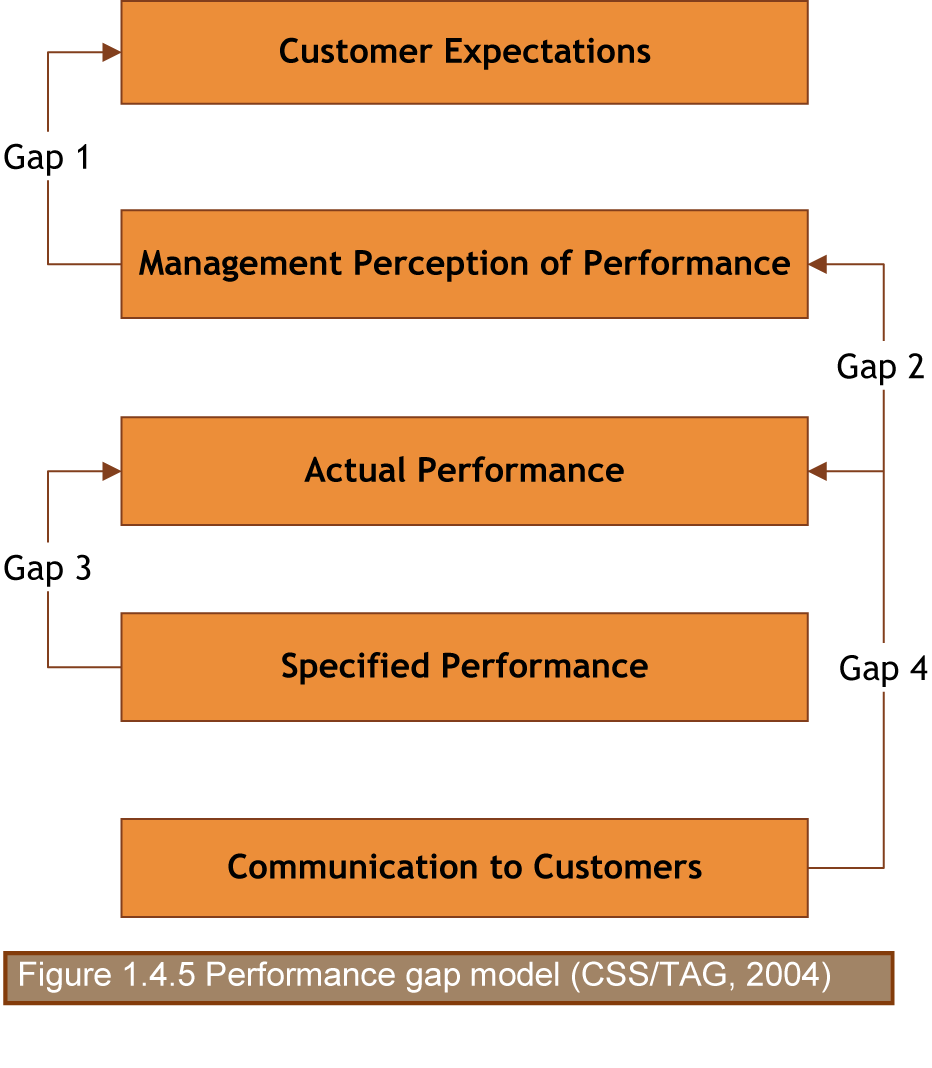
Asset Management Manual
A guide for practitioners!

Asset Management Manual
A guide for practitioners!
Once performance targets have been developed, they can be used to compare current against desired performance (levels of service). Any gap between the two informs about the works programs necessary to meet the asset management strategy.
An initial evaluation of performance gaps can be undertaken by simply identifying those performance measures where the target measure has not been met. It should be noted however that a performance gap could exist for a number of reasons as follows (see figure 5):
Gap 1: Customer Expectations – Management Perception: The customer’s expectations of the service provided do not match the service provider’s management perception of what is to be provided.
Gap 2: Management Perception – Actual Performance: The management perception of the service quality does not match the actual quality of service being provided
Gap 3: Actual Performance – Specified Performance: The service is not being delivered to the quality specified in the relevant standards and/or contracts.
Gap 4: Actual Performance – Communication to Customers: There has been inadequate communication with the customers resulting in them having a skewed perception of the service delivered.

In works planning and programming, performance measures are used to structure the comparison of different options at the network and project levels.
The use of performance measures rarely makes decisions easier or automatic, but it can inform the decision – making process and communicate more effectively the consequences of investment choices.
Finally, attention should be paid to verifying that, after implementation of programs, the desired levels of service are achieved, capturing the lessons learnt from any lack of performance and including these in any revision of performance measures, targets and programs of actions/works. This is part of the approach to performance monitoring described in section 2.2.